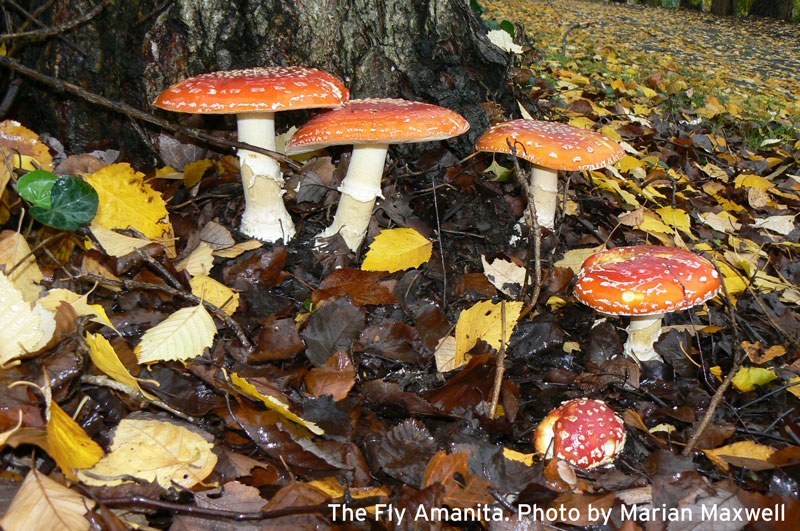
by Joan Miller
Autumn in the Pacific Northwest can be a circle of sun and ice. Mornings of frost-coated leaves melt into blazing sunny days. You may start the day piling on layers of fleece and down, only to find yourself in one short-sleeve shirt by mid-afternoon.
It’s a time to switch gears; focus your eyes and ears more acutely. Wildflowers are pretty much over; shorebirds have left or are dwindling, and the spring-summer birdsong has transitioned into silence. But there are different pleasures of the season. Now you can get out to those places that were too darn hot or crowded in summer. The forests may be quieter, but the moisture is returning and while some parts of the natural world are dialing down, others are springing back to life.
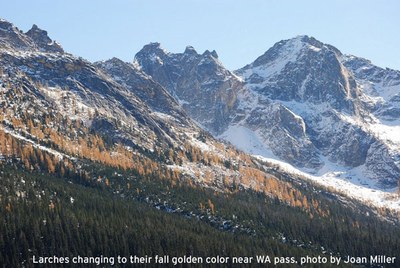 For sure, there are colors to be relished; vine maples turn to red, cottonwoods to yellow. You can’t beat a drive along North Cascades Scenic Byway, also known as State Highway 20. Last October I drove the route out to Winthrop for the first time. Yes, I expected nice scenery, but I wasn’t prepared for what I found. As I wound my way along the byway, I became the stereotypical wide-eyed, gawking tourist. An azure sky served as the backdrop for brilliant yellows and oranges, but the peaks stole the show. I made several stops along the way to drink in the views and crisp air, on my maiden voyage through Washington Pass. The hillsides were dotted with golden glowing subalpine larches, our native deciduous conifer, and I was pleased to find that I could climb a very short distance to get up close to them.
For sure, there are colors to be relished; vine maples turn to red, cottonwoods to yellow. You can’t beat a drive along North Cascades Scenic Byway, also known as State Highway 20. Last October I drove the route out to Winthrop for the first time. Yes, I expected nice scenery, but I wasn’t prepared for what I found. As I wound my way along the byway, I became the stereotypical wide-eyed, gawking tourist. An azure sky served as the backdrop for brilliant yellows and oranges, but the peaks stole the show. I made several stops along the way to drink in the views and crisp air, on my maiden voyage through Washington Pass. The hillsides were dotted with golden glowing subalpine larches, our native deciduous conifer, and I was pleased to find that I could climb a very short distance to get up close to them.
I was far from alone on my journey, and I suspect that even jaded locals were getting out to celebrate not only the incredible bounty of nature we enjoy in our state, but the fact that someone had the wisdom to preserve it. There’s nothing better than hitting the trail, drinking in the views, breathing the sweet air and leaving our cares behind. But while we’re gawking and lollygagging, other creatures are anything but relaxed; fall is a busy time of intense focus for them. They’re obeying their instincts, chowing down, heading for their southern homes and preparing for harder times ahead.
Autumn signals major changes in behavior for bears and elk, among others. Black bears vary their diets with the season. In late summer and fall, they shift from plants and bugs to berries, tree fruits and nuts. Bears pile on the fat during the fall, foraging up to 20 hours a day and increasing body weight by a third before winter.
Bull elk too are busy, getting ready for the rut. Since late summer, males have been gathering females into harems, and by late September, the action heats up. That’s when you could hear the bulls bugling.
Where to go: Fall foliage
Highway 20 to Washington Pass or beyond; Highway 542, Mount Baker Scenic Byway winds along the Nooksack River and takes you to Artists Point at 5,000 feet. From there, trails go to Ptarmigan Ridge, where you can, indeed, look for white-tailed ptarmigan, in addition to rosy finches, pikas, marmots and possible mountain goats.
Birds on the move
The trees and sky hold migrating birds, big and small. Songbirds are quieter and more secretive at this time of year. They’re concentrating on eating and not being eaten. You can look for birds almost anywhere, any time, and patience and binoculars will make it all the more rewarding.
Birding and patience are inseparable. Imagine yourself sitting, perhaps not too comfortably, on a rocky outcrop, body, head and hands clothed against the cold and wind, scanning the ridge top for moving specks. That’s the joy of fall hawk migration! All over the country, official hawk watch sites collect data on migrating raptors. Visitors are always welcome and birders are usually happy to help newbies learn about hawks. Although finding a good spot for hawk watching in Washington is challenging, a good place to try your luck is Chelan Ridge, Washington’s only official counting station. On a good day, you could see red-tailed, sharp-shinned, and Cooper’s, hawks, and golden eagles. An excellent resource about hawk watch sites and data is the Hawk Migration Association of America’s website, www.hmana.org.
Later in fall and winter, the Skagit Valley is unbeatable for watching hawks and owls. Although some raptors are migrating now, others will stay in the area and can always be observed. Species regularly seen include red-tailed and rough-legged hawks, bald eagles, and short-eared owls.
Where to go: Hawk watching
Chelan Ridge is located about 13 miles north–northwest of the village of Chelan. Counts at the hawk watch typically range between 2,000-3,000 migrants of up to 17 species per season. The nearby community of Pateros holds its annual Chelan Ridge Hawk Migration Festival on September 14, with shuttles to the ridge and a host of activities and other trips. Head for Memorial Park to find the event. More details can be found at the North Central Washington Audubon Society website, www.ncwaudubon.org.
Small Things
On a smaller scale, there’s plenty happening closer to earth. You won’t hear them, but spiders are busy spinning their webs. We Pacific Northwesterners are blessed (or cursed?) with a healthy population of spiders. According to the Burke Museum, it’s a myth that “they come indoors in the fall to get out of the cold.” OK, outdoor spiders may stay outdoors, but does that make us feel better? Who among us has not suddenly become encased in the sticky strands of a spider web stretched across a wooded path? Even if you aren’t arachnophobic, the experience can make you squirm just thinking about it.
But you have to appreciate the genius of the web. For spider webs, form follows function. All spider species spin silk, but not all build webs. Web-building spiders depend on their webs for survival, and they can rebuild them daily, so you need not feel too guilty if you break one. In fact, spiders are champion recyclers: they eat their used webs before spinning a new one. Spiders are present year-round, but in the fall, young ones often disperse by “ballooning” on silk strands. It’s also mating time for spiders, with females leaving behind their egg sacs to overwinter. Spiders can live for a year or less, and many of the cold-blooded adults die when winter sets in.
Another creature active in the fall has no legs and leaves a telltale iridescent trail wherever it goes. As moisture returns in the fall, you may see more banana slugs out and about. Though their name would make you think they’re all yellow, some are brown, some are greenish, and many have spots. Our Pacific banana slug is the second largest in the world, reaching up to 10 inches in length. They move by a muscular foot, and they have two pairs of tentacles that sense light and smells. Their slimy mucus serves many purposes: protection against dehydration and predators, and attraction of mates. In times of drought, they estivate under leaves and soil. They mate throughout the year and abandon the eggs after they are laid. Slow-moving slugs are preyed upon by raccoons, snakes, salamanders, ducks, foxes, crows, shrews and other creatures.
Why should we care about slugs? Like all things in nature, they play an important role within their ecosystems. These lowly creatures are among nature’s decomposers, humbly cleaning up the forest floor by consuming dead plant material and animal droppings and turning them into humus, which cycles nutrients back to ecosystem. They also help distribute seeds and spores.
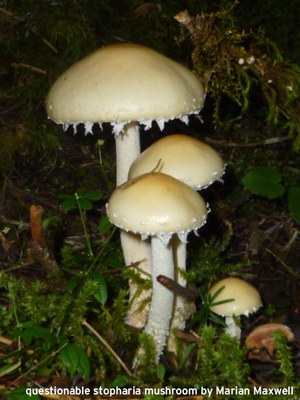
Speaking of spores, fall is prime time for mushrooms, and our northwest climate supports a multitude of species. Forest floors and logs flush with moisture coax fungi to emerge after the dry season. If you’ve never paid much attention to fungi, you might be surprised by the assorted shapes and colors. Beyond the stereotypical umbrella shape, mushrooms can be “shaped like heads of lettuce, cones, gelatin cups, coral, fingers and oozy blobs,” note authors Stephen Whitney and Rob Sandelin of the “Field Guide to the Cascades & Olympics,” published by The Mountaineers Books.
Fungi are decomposers in the ecosystem, recycling energy and nutrients. Mushrooms are just the fruiting bodies that we see above ground. But below the soil, a web of mycelium is the heart of a fungus. This web can extend far from its mushrooms and plays a vital role in the health of the forest. Not all fungi fruit at the same time; each has its season. Marian Maxwell, president of the Puget Sound Mycological Society, noted some of the most common mushrooms to be seen on hikes (and you’ve got to love the names): shaggy parasol (Cholorphyllum olivieri , Cholorphyllum rachodes, or Cholorphyllum brunneum), The Prince (Agaricus augustus), The Spring King (Boletus rex-veris), Gymnopus peronatus (Wood woolyfoot mushroom), white russula (Russula brevipes or Russula cascadensis), Witch's butter (Dacrymyces chrysospermus), shaggy manes (Coprinus comatus), Inky caps (Coprinopsis atramentaria), Red Banded Polypore (Fomitopsis pinicola), the fly amanita (Amanita A. muscaria var. flavivolvata ), and the questionable stropharia (Stopharia ambigua).
It’s not advisable to collect mushrooms for consumption, unless you are extremely knowledgable — and even then, it can be risky. One mistake can cost you your life. Maxwell adds that you should first know the harvesting regulations for the area, and avoid collecting in any place that’s contaminated because mushrooms concentrate toxins in their environment.
Mosses and Lichens
Rains also bring desiccated mosses and lichens back to their glorious colors. Don’t dismiss these oft-overlooked residents of the woods. They’re complex organisms: lichens are a combination of a fungus and green algae, and sometimes also cyanobacteria. Like fungi and slugs, the northwest is blessed with an abundance of lichens and mosses. A 2005 survey by the U.S. Geological Service found more than 13,000 species of lichens and bryophytes (mosses, liverworts and hornworts) in Olympic National Park alone. Even though they are miniscule, you won’t have trouble finding them; they live on soil, trees, stumps, logs and rocks.
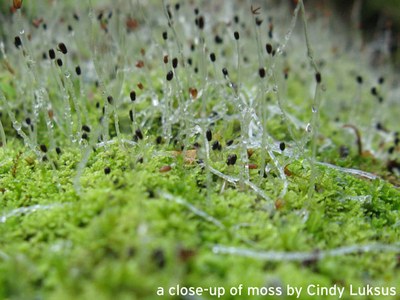 Lichens are not only interesting and sometimes beautiful, they are a vital source of food, shelter and nest material for many creatures. Even mammals as large as elk, deer, bighorn sheep, and mountain goats eat lichens. Lichens are sensitive to pollutants and so are good indicators of air quality. The best way to enter this hidden miniature world is with a hand lens. Like Alice through the looking glass, you’ll spy British soldiers and pixie cups. You might also see rosettes, strands of hair, or snowflakes. To start your journey, visit www.lichen.com, which features not only photos of North American lichens but also information about lichens and their importance to people and wildlife. But once you go down this rabbit hole, you might find it hard to return.
Lichens are not only interesting and sometimes beautiful, they are a vital source of food, shelter and nest material for many creatures. Even mammals as large as elk, deer, bighorn sheep, and mountain goats eat lichens. Lichens are sensitive to pollutants and so are good indicators of air quality. The best way to enter this hidden miniature world is with a hand lens. Like Alice through the looking glass, you’ll spy British soldiers and pixie cups. You might also see rosettes, strands of hair, or snowflakes. To start your journey, visit www.lichen.com, which features not only photos of North American lichens but also information about lichens and their importance to people and wildlife. But once you go down this rabbit hole, you might find it hard to return.
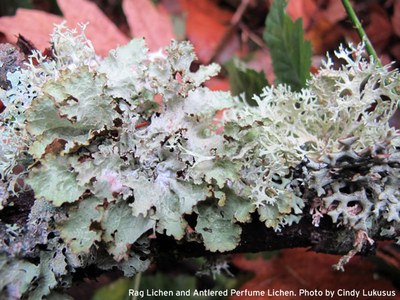 Where to go: Mosses, lichens, fungi
Where to go: Mosses, lichens, fungi
Almost any natural area is a good place to look for this group, but less disturbed places, especially those with old growth and well-developed understories offer more variety. Some suggestions: any national park, and state and local parks including Twin Falls, Swauk and Cougar Mountain, Seward, Discovery, Carkeek and Schmitz.
This article originally appeared in our Sept/Oct 2014 issue of Mountaineer magazine. To view the original article in magazine form and read more stories from our bi-monthly publication, click here.
 Joan Miller
Joan Miller